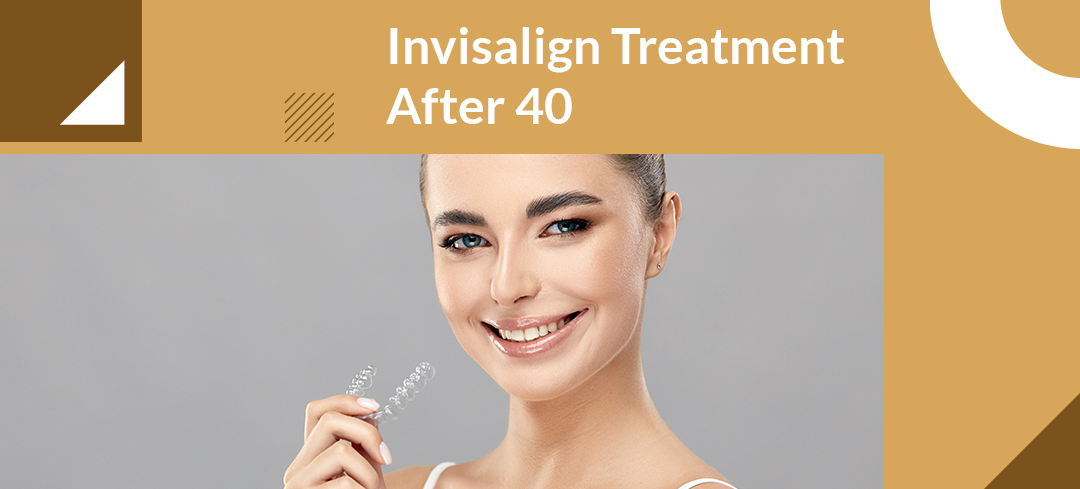Anyone can have dental issues. It is not specific to people of certain ages. This means that anyone, both young and old, can face dental problems such as crooked teeth, misaligned teeth or several others. While it is easier and better to have these problems corrected when the patient is young or in their teen years, it does not mean that much older people do not stand a chance.
Most adults over the age of 40 choose to put off getting their teeth straightened because they feel they may be too old. However, the good news is that you can always get your teeth straightened at any age with Invisalign invisible braces or any other orthodontic treatment type.
What is Invisalign treatment?
Invisalign treatment is a type of treatment that involves wearing a set of visually invisible custom-made aligners that work by straightening your teeth discreetly. They are quite different from traditional metal braces in the sense that they do have metal wires or brackets. Instead, they are made of clear plastic materials, and this is one of the features that make them unnoticeable. Furthermore, with Invisalign braces, you can remove them when eating, drinking or brushing your teeth.
Is there an age limit for Invisalign treatment?
A lot of people seem to believe that orthodontic treatments are only for children and teenagers. This is not the case, as anyone can get orthodontic treatment for their teeth irrespective of their age. Although orthodontic treatments are common for young people, you can also get it done later in life.
How would you know if you are suitable for Invisalign treatment?
Before you can begin your treatment with Invisalign, you would have to attend a consultation with a dentist or Invisalign specialist. They will assess your teeth and gums and find out if they are healthy enough for the treatment to be effective.
If it turns out that there are underlying issues like tooth decay, you would have to get the issue resolved before commencing treatment with Invisalign.
How does one benefit from invisalign treatment?
Invisalign treatment is very useful when you feel self-conscious about your teeth or smile. Invisalign treatment helps you regain your lost confidence by straightening your teeth discreetly. Even more, they can be worn during public or social events like parties or events without people noticing. Additionally, they are removable, thus allowing you to eat, drink, brush and floss without issues.
By fixing crowded teeth, Invisalign braces can help improve your oral health. This is because crowded teeth make it difficult to clean some areas when brushing or flossing. This can put you at risk of oral health issues like gum disease, which ultimately leads to tooth decay and tooth loss.
How does the Invisalign treatment work?
The Invisalign braces are custom-made, clear plastic aligners that are virtually invisible. This means that no one can tell that you are wearing them or that you are undergoing teeth straightening treatment. For them to work effectively, they must be worn for 20 -22 hours daily, and this means that they are also to be worn as you sleep.
Treatment with Invisalign takes about 9 – 15 months on average. However, the duration of your treatment depends on the severity of your case. For some mild cases, treatment can be completed in as little as three months. Again, this depends on the severity of the case and also on the individual’s needs.
Where can I get Invisalign?
You can get Invisalign only from certified specialists. The first process usually involves consultation with these specialists to determine if you are eligible for the treatment or not. At Adult Braces London, our orthodontists are specially trained dentists that have been committed to extra years of study after training in dentistry in order to achieve their specialist status. Our experience and our expertise have made us one of the most reliable sources of Invisalign.
Now that you are aware of an excellent place to get Invisalign braces in London, book a free consultation with us at Adult Braces London. These consultations are mediums for discussing the options and suitability for treatment.


 Home
Home










